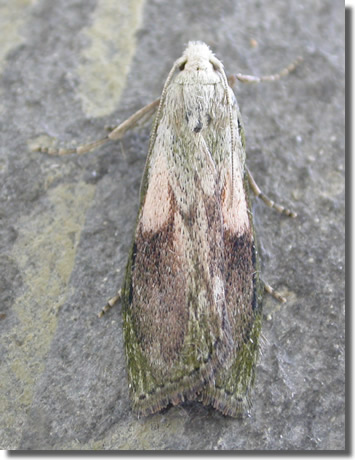Bee Moth
Aphomia sociella
Checklist Number62.001 [B&F: 1428]
Verification
Record will be accepted (subject to date and location checks)
Classification
| Family: | Pyralidae |
| Subfamily: | Galleriinae |
| Genus: | Aphomia |
| Species: | sociella |
| Authority: | (Linnaeus, 1758) |
Common around bee and wasp nests and in beehives throughout Britain. Widespread and common in Hampshire and on the Isle of Wight. Wingspan 25-38 mm. Highly sexually dimorphic, the distinctive male is unmistakable, but the female is superficially similar to the much narrower-winged Melissoblaptes zelleri, a species confined to sandhills in a very few locations in south-eastern England. Larva feeds on the debris in, and contents of, wasp and bee nests.


The abundance in each month is indicated as follows:
 No records
No records Very occasional
Very occasional Irregular
Irregular Uncommon
Uncommon Off-peak, but not unusual
Off-peak, but not unusual Off-peak, but not unusual
Off-peak, but not unusual Main flight time
Main flight time| J | F | M | A | M | J | J | A | S | O | N | D | |
|---|---|---|---|---|---|---|---|---|---|---|---|---|
| Adult |  |  |  |  |  |  |  |  |  |  |  |  |
| Larval |  |  |  |  |  |  |  |  |  |  |  |  |



